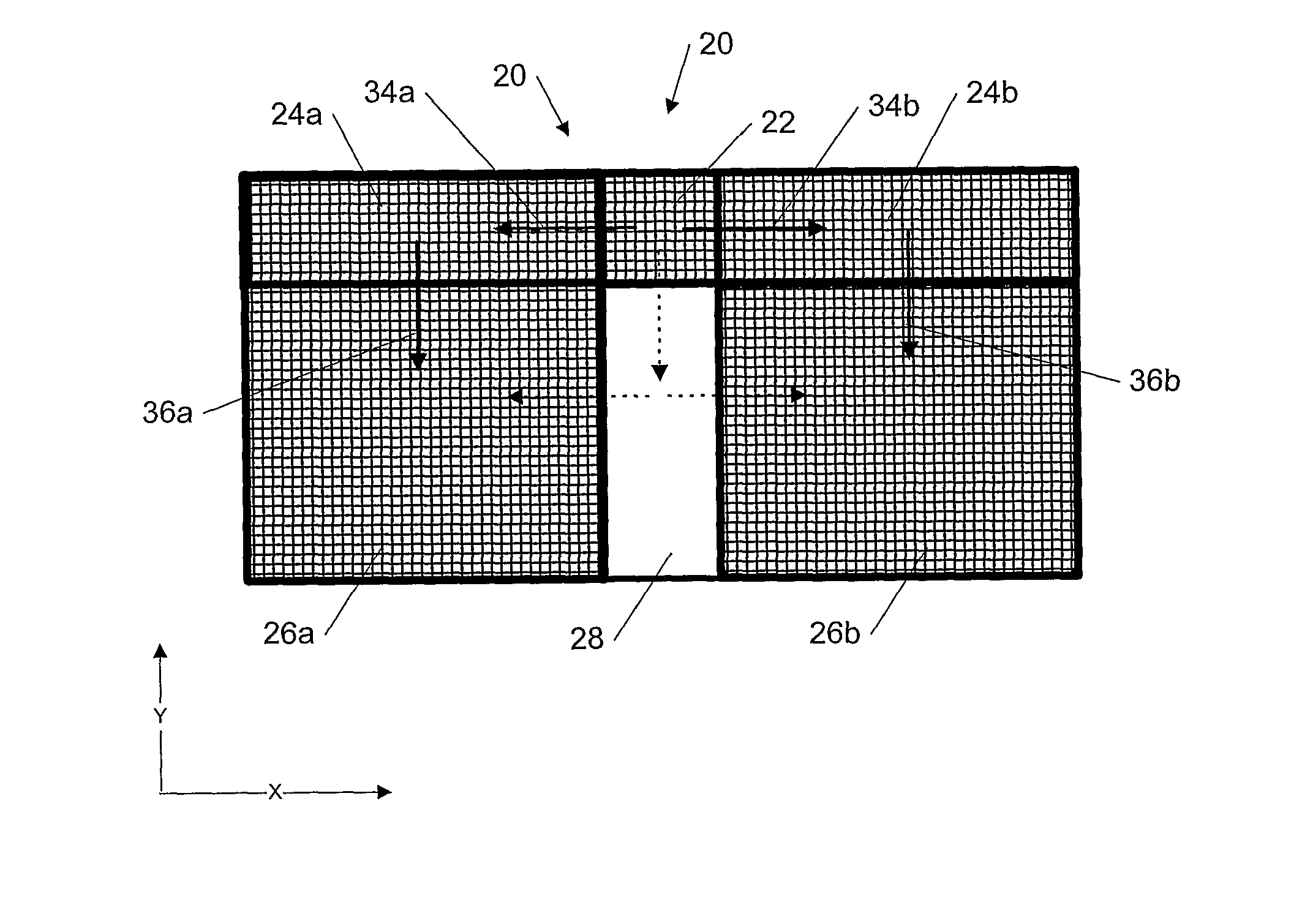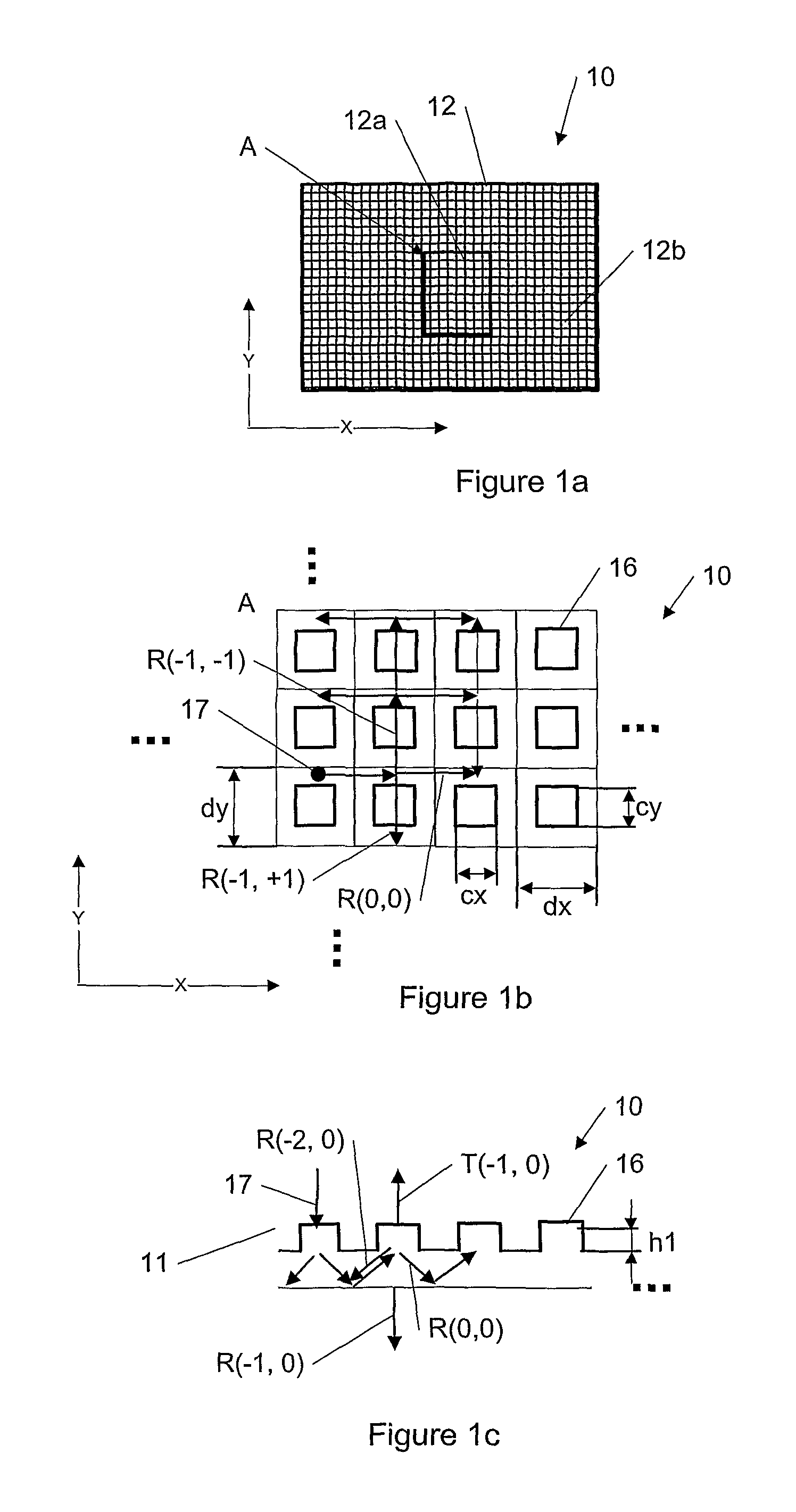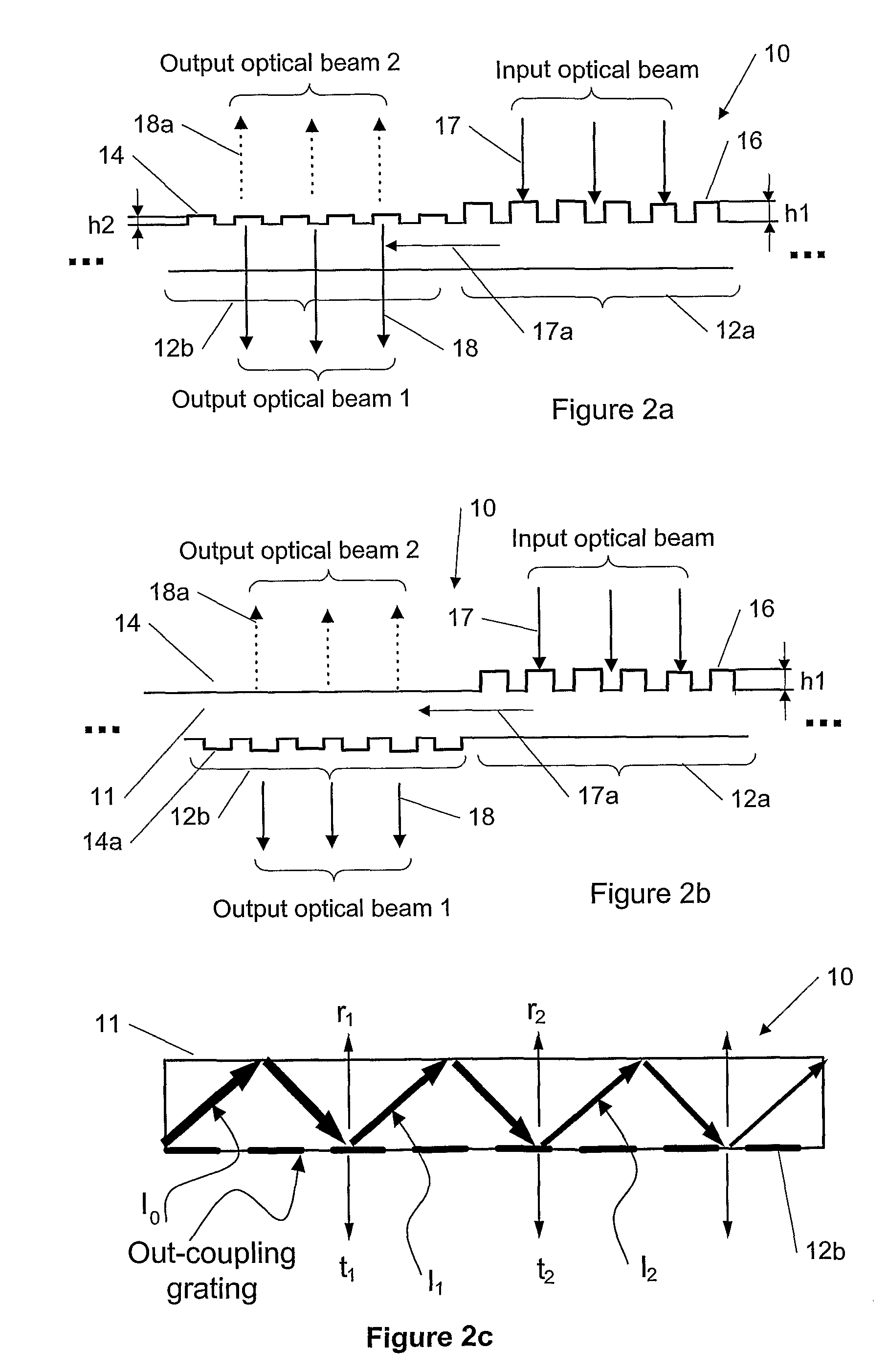Beam expansion with three-dimensional diffractive elements
a diffractive element and beam expansion technology, applied in the field of diffractive optics methods, can solve the problems of requiring a lot of space and difficult manufacturing of such grating assemblies
- Summary
- Abstract
- Description
- Claims
- Application Information
AI Technical Summary
Problems solved by technology
Method used
Image
Examples
Embodiment Construction
[0067]A new method and apparatus are presented for using a three-dimensional (3D) diffractive element (e.g., a 3D diffractive grating) for expanding in one or two dimensions the exit pupil of an optical beam in electronic devices. Various embodiments of the present invention can be applied, but are not limited, to forming images in virtual reality displays, to illuminating of displays (e.g., backlight illumination in liquid crystal displays) or keyboards, etc. The embodiments of the present invention can be applied to a broad optical spectral range of optical beams but most importantly to a visible part of the optical spectrum where the optical beams are called light beams.
[0068]According to embodiments of the present invention, the optical device (e.g., the optical device can be a part of a virtual reality display of an electronic device) can comprise a substrate made of an optical material having a first surface and a second surface and a three-dimensional diffractive element (3D)...
PUM
 Login to View More
Login to View More Abstract
Description
Claims
Application Information
 Login to View More
Login to View More - R&D
- Intellectual Property
- Life Sciences
- Materials
- Tech Scout
- Unparalleled Data Quality
- Higher Quality Content
- 60% Fewer Hallucinations
Browse by: Latest US Patents, China's latest patents, Technical Efficacy Thesaurus, Application Domain, Technology Topic, Popular Technical Reports.
© 2025 PatSnap. All rights reserved.Legal|Privacy policy|Modern Slavery Act Transparency Statement|Sitemap|About US| Contact US: help@patsnap.com



